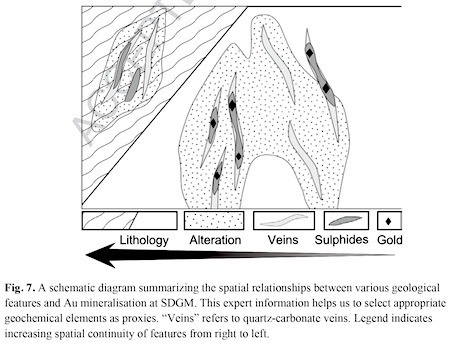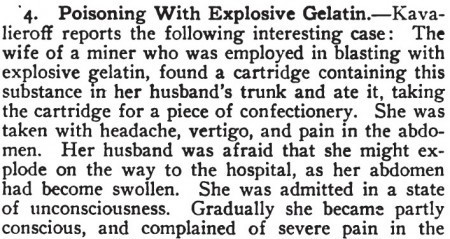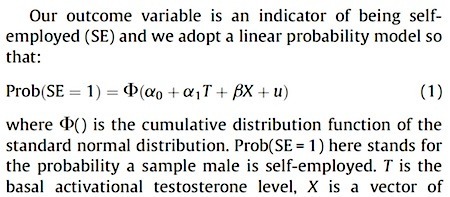Marc Abrahams's Blog, page 399
June 2, 2014
Further adventures with plastic pink flamingos: lemurs
Io9 published a selection of photos of plastic pink flamingos used as mental stimulants for lemurs in the San Francisco Zoo:
Lawn Ornaments Help Lemurs Stay Happy and Healthy
The San Francisco Zoo recently introduced its lemurs to some pink plastic flamingos. The results were predictably adorable, but the flamingos weren’t just decoration. They’re an effort to give the lemurs a bit of mental exercise…. One form of environmental enrichment involves introducing new objects for the animals to explore….
The photos are by Jessie Greger. See .
Plastic pink flamingoes came into existence in the twentieth century. The 1996 Ig Nobel Prize for art was awarded to Don Featherstone of Fitchburg, Massachusetts, for his ornamentally evolutionary invention, the plastic pink flamingo. [REFERENCE: Don Featherstone's book Pink Flamingos: Splendor on the Grass]

Further adventures with plastic pink flamingos, and lemurs
Io9 published a selection of photos of plastic pink flamingos used as mental stimulants for lemurs in the San Francisco Zoo:
Lawn Ornaments Help Lemurs Stay Happy and Healthy
The San Francisco Zoo recently introduced its lemurs to some pink plastic flamingos. The results were predictably adorable, but the flamingos weren’t just decoration. They’re an effort to give the lemurs a bit of mental exercise…. One form of environmental enrichment involves introducing new objects for the animals to explore….
The photos are by Jessie Greger. See .
Plastic pink flamingoes came into existence in the twentieth century. The 1996 Ig Nobel Prize for art was awarded to Don Featherstone of Fitchburg, Massachusetts, for his ornamentally evolutionary invention, the plastic pink flamingo. [REFERENCE: Don Featherstone's book Pink Flamingos: Splendor on the Grass]

June 1, 2014
Bill Tivol joins Luxuriant Flowing Hair Club for Scientists (LFHCfS)
Bill Tivol has joined the Luxuriant Flowing Hair Club for Scientists (LFHCfS). He says:
This should qualify me for the flowing hair club, especially if I get bonus points for having this hair after chemotherapy. After getting a razor-cut about two years ago, I let my hair grow out while I looked for a barber more suitable to my needs. I was waiting for a friend, who is a hairdresser, to come for a visit, but this had been postponed several times, so my hair became more luxuriant and flowing.
Bill Tivol, Ph.D., LFHCfS
Scientific Engineering Associate
Lawrence Berkeley National Laboratory
Berkeley, California, USA


Gold Nuggety? (Nugus, and yes, Cleverley, and then some)
How to recognize gold that’s nuggety, amidst the rabble of planet earth? This study makes a suggestion:
“Using Geochemical Proxies to Model Nuggety Gold Deposits: An example from Sunrise Dam, Western Australia,” E. June Hill [pictured here], Nicholas H.S. Oliver, Louise Fisher, James S. Cleverley, Michael J. Nugus, Journal of Geochemical Exploration, epub May 24, 2014. (Thanks to investigator Tom Gill for bringing this to our attention.) The authors, at CSIRO (Bentley, WA), James Cook University, and AngloGold Ashanti, in Perth, Australia, report:
“Gold distribution in vein-hosted hydrothermal ore deposits is commonly nuggety (i.e. occurs as very localised concentrations of gold). In these cases samples for gold assay from diamond drill core may be too small to model the underlying heterogeneity of gold distribution and result in poorly constrained orebody models and underestimated gold resources…. We present a method for automating the use of geochemical proxies for nuggety gold ore bodies.”
Here’s another detail from the study:

May 31, 2014
“Creativity is worth a thousand words”, and professors of Creativity
Lesley University, in Cambridge, Massachusetts, has recently arranged for advertising billboards to appear in their (and our) neighborhood, featuring the slogan “Creativity is worth a thousand words“. Passersby must be creative in discerning the meaning, if any, of that slogan. Here’s a photo of one of the billboards (atop a building in Porter Square, Cambridge):

Creativity At Lesley
The university has a Creativity Commons.
The commonality of the creativity in the Creativity Commons comes across clearly in the official description: “The Commons is the physical manifestation of a space where ideas generated by faculty from across the university can emerge as actions.”
What does the Creativity Commons value? Documentation: “The Creativity Commons values documentation as a form of assessment offering the opportunity to fuse both the aesthetic and the analytical experience. “
Creativity Elsewhere in Academe
What of other educational institutions, elsewhere? Some of them have professors who are, officially, professors of creativity. Among the more creative of those, one finds:
Professor Perini of Cornerstone
Don Perini [pictured here] is Associate Professor of Ministry and Creativity at Cornerstone University, USA.
Professor Perini’s web site at the university says “His goal is to unleash each student’s creative potential in order to redeem the world through their creative acts” and “Perini and his wife enjoy having students to their home for a meal and party games.”
Professor McLoughlin of Gloucestershire
 Nigel McLoughlin [pictured here] is Professor of Creativity & Poetics at the University of Gloucestershire, UK.
Nigel McLoughlin [pictured here] is Professor of Creativity & Poetics at the University of Gloucestershire, UK.
Professor Ray is a published poet.
Professor Ray
 Michael L. Ray [pictured here] is John G. McCoy-Banc One Corporation Professor of Creativity and Innovation and of Marketing, Emeritus at Stanford Graduate School of Business, USA.
Michael L. Ray [pictured here] is John G. McCoy-Banc One Corporation Professor of Creativity and Innovation and of Marketing, Emeritus at Stanford Graduate School of Business, USA.
Professor Ray’s web site at the university says “His best-selling Creativity in Business (with Rochelle Myers) was named, one of the nine ‘Greatest Business Books Ever Written’ byInc. magazine.”
Professor Ray is a trustee of the Institute of Transpersonal Psychology.
Professor Friedman of Miami, of Ohio
 Jim Friedman is Clinical Professor of Creativity at Miami University of Ohio, USA.
Jim Friedman is Clinical Professor of Creativity at Miami University of Ohio, USA.
Professor Friedman’s web site at the university says “all will agree on his passion and dedication to sharing the magic of creativity and innovation in everything he does.”

May 30, 2014
Eats words and leaves
 ‘Graphophagia’ is a new word (or neologism if you prefer) coined by Janet Beizer who is Professor of Romance Languages and Literatures at Harvard University. It’s derived from Greek, [literally 'writing-eating'] and refers to a type of ‘Pica‘ – specifically a subset of ‘Xylophagia’ (i.e. eating wood or paper) but whereby practitioners not only eat the paper, but also the words written on it.
‘Graphophagia’ is a new word (or neologism if you prefer) coined by Janet Beizer who is Professor of Romance Languages and Literatures at Harvard University. It’s derived from Greek, [literally 'writing-eating'] and refers to a type of ‘Pica‘ – specifically a subset of ‘Xylophagia’ (i.e. eating wood or paper) but whereby practitioners not only eat the paper, but also the words written on it.
The professor will present an essay on the subject at the Dublin Gastronomic Symposium, June 3rd & 4th, 2014. It’s entitled : ‘Lust for Leaves’. What are the implications for/of those who eat pages of books?
“In the first part of my paper I will discuss the medical literature on pica with its diagnostic emphasis on the craving for substances deemed to have ‘insignificant nutritive values’ and on the ‘false or defective appetites’ of the patients so diagnosed. I’ll then go on to reconsider the meaning of ‘significant/insignificant nutritive value’ in the context of writing and writers, for whom paper may have alimentary properties of symbolic if not biological nature, and will consider graphophagia as a mode of writing and reading excess that may better be understood in the light of anthropological, literary, and psychoanalytic theories of orality, inner/outer dichotomies and their breakdown, matter in and out of place, and the unmaking and making of the wor(l)d.“
The full abstract may be read here, in the symposium’s Book of Abstracts and Speakers [pp. 7 & 8]
BONUS: Improbable Serving Suggestion (best with a pinch of salt)
If one printed, say, Claudine à l’école on a folio of rice paper using edible ink, could one become an ouroboric graphophagist - in the sense that you’d not only be eating words, but the very words that Honoré de Balzac used to describe the practice of paper eating?
“Driven by example, I take a book of cigarette paper from my pocket (I only eat ‘Nile’ brand) and chew with enthusiasm.”

May 29, 2014
Collision Detection: Bees versus Fish (by Ig Nobel Prize winners)
Ig Nobel Prize winners Marie Dacke and Emily Baird are now exploring how how bees collide or don’t is different from how fish collide or don’t. They and their colleagues have just published a study of the matter.
The 2013 Ig Nobel Prize jointly in the fields of biology and astronomy was awarded to Marie Dacke, , Marcus Byrne, Clarke Scholtz, and Eric J. Warrant, for discovering that when dung beetles get lost, they can navigate their way home by looking at the Milky Way. [REFERENCE: "Dung Beetles Use the Milky Way for Orientation," Marie Dacke, Emily Baird, Marcus Byrne, Clarke H. Scholtz, Eric J. Warrant, Current Biology, epub January 24, 2013.]
NOTE: Dacke and Baird will be part of the Ig Nobel shows at ESOF in Copenhagen in June!
The bees/fish study is:
“Control of self-motion in dynamic fluids: fish do it differently from bees,” Christine Scholtyssek [pictured here], Marie Dacke, Ronald Kröger and Emily Baird, Biology Letters, vol. 10, no. 5, 2014, 20140279. (Thanks to Tony Tweedale for bringing this to our attention.) The authors, at Lund University, report:
“To detect and avoid collisions, animals need to perceive and control the distance and the speed with which they are moving relative to obstacles. This is especially challenging for swimming and flying animals that must control movement in a dynamic fluid without reference from physical contact to the ground. Flying animals primarily rely on optic flow to control flight speed and distance to obstacles. Here, we investigate whether swimming animals use similar strategies for self-motion control to flying animals by directly comparing the trajectories of zebrafish (Danio rerio) and bumblebees (Bombus terrestris) moving through the same experimental tunnel. While moving through the tunnel, black and white patterns produced (i) strong horizontal optic flow cues on both walls, (ii) weak horizontal optic flow cues on both walls and (iii) strong optic flow cues on one wall and weak optic flow cues on the other. We find that the mean speed of zebrafish does not depend on the amount of optic flow perceived from the walls. We further show that zebrafish, unlike bumblebees, move closer to the wall that provides the strongest visual feedback.”
BONUS: The 2005 Ig Nobel Peace Prize was awarded to Claire Rind and Peter Simmons of Newcastle University, in the U.K., for electrically monitoring the activity of a brain cell in a locust while that locust was watching selected highlights from the movie “Star Wars.” [REFERENCE: "Orthopteran DCMD Neuron: A Reevaluation of Responses to Moving Objects. I. Selective Responses to Approaching Objects," F.C. Rind and P.J. Simmons, Journal of Neurophysiology, vol. 68, no. 5, November 1992, pp. 1654-66.]

The dangers of delicious dynamite
Gelignite, or blasting gelatin, is a mixture of nitroglycerin, gun cotton, and a combustible substance like wood pulp. It resembles dynamite (also invented by Alfred Nobel) but can be conveniently molded into shape with the bare hands.
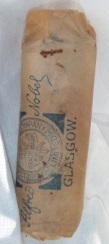
A WWII-era gelignite cartridge, found in 2012 in Kalbarri, Western Australia.
The October 6, 1904 issue of Roussky Vratch (Русский врач , or “Russian Doctor”, a journal that still exists today) contained a dispatch from one I. N. Kavalieroff, about a young woman who “found a cartridge containing this substance in her husband’s trunk and ate it, taking the cartridge for a piece of confectionery.”
Despite her husband’s fears, she neither exploded nor expired from the effects of the poison, as summarized in the New York Medical Journal six weeks later.
In view of the fact that explosive gelatin … gives off a quantity of nitrous acid vapors while decomposing, the stomach was washed with a solution of sodium bicarbonate, and a number of bubbles of gas escaped. A dose of castor oil was poured into the stomach tube, the patient was given a subcutaneous injection of caffeine, sodium benzoate, and ergotine, and coffee internally. The patient had a copious evacuation and quickly recovered.
The symptoms, therefore, were those of poisoning with nitroglycerin, amyl nitrite, etc. The dose of nitroglycerin taken by this patient was two ounces, or six thousand times the therapeutic dose.
We can find no subsequent reports of Russians confusing nitroglycerin-based explosives with candy, so it’s likely that the imperial ministry of mines changed their gelignite formulation to be less appetizing.
Follow Amboceptor on Twitter: @AmboceptorBlog

May 28, 2014
mini-AIR May issue: Bang’s Cuspidor, and so forth
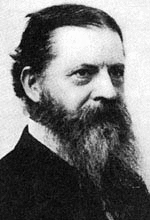 The May issue of mini-AIR (our monthly e-mail newsletter just went out. (mini-AIR is a wee little supplement to the magazine). Topics include:
The May issue of mini-AIR (our monthly e-mail newsletter just went out. (mini-AIR is a wee little supplement to the magazine). Topics include:
Bang’s Blutzucker
The BG Bang Limerick Competition
Bang’s Cuspidor
and more
It also has info about upcoming events.
Mel [pictured here] says, “It’s swell.”
mini-AIR is the simplest way to keep informed about Improbable and Ig Nobel news and events.
Want to have mini-AIR e-mailed to you every month? Just add yourself to the mini-AIR list.

CONVERSATION STARTER: Testosterone in self-employed Australian men
If you’re stuck in an awkward social situation, and need some convenient way to switch the conversation to a different topic, mention this study:
“Testosterone is associated with self-employment among Australian men,” Francis J. Greene, Liang Han, Sean Martin, Song Zhang, Gary Wittert, Economics & Human Biology, Volume 13, March 2014, Pages 76–84. The authors, at University of Birmingham, UK, the University of Surrey, UK, and the University of Adelaide, Australia, explain:
“Using the ratio of second to fourth finger (2D:4D) as a marker of organizational testosterone, Branas-Garza and Rustichini (2011) found in their study of 188 college students that lower digit ratio was associated with financial risk-taking in men…. Age plays a significant role in models with restricted samples, suggesting that older males are more likely to be self-employed than younger males. This effect is not significant in Model 1… with an increase of total testosterone by one standard deviation, the probability of being self-employed increases by 9.97% in Model 3 and by 13.73% in Model 4.”
The study even includes an equation. Here it is:

Marc Abrahams's Blog
- Marc Abrahams's profile
- 14 followers


